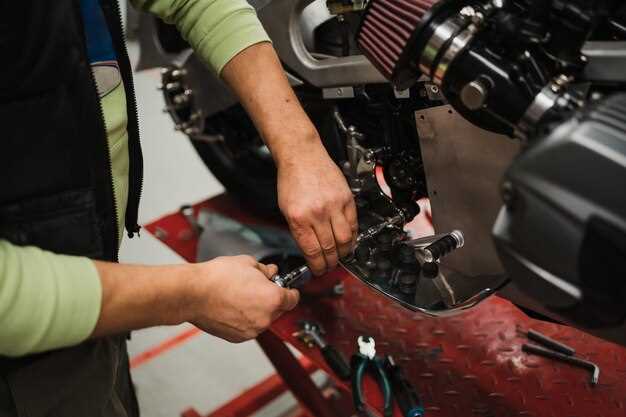
Changing your motorcycle oil at home is not only a cost-effective maintenance task but also an empowering way to connect with your bike. Understanding the oil change process enables you to take control of your motorcycle’s performance and longevity. Regular oil changes decrease engine wear, improve fuel efficiency, and enhance overall riding experience.
The first step in this DIY journey is understanding the type of oil required for your specific motorcycle model. Consult your owner’s manual to determine the recommended oil type and capacity. This knowledge is crucial, as using the wrong oil can lead to engine damage. Additionally, gathering the appropriate tools and materials will streamline the process and ensure a successful oil change.
Once equipped, you’ll experience the satisfaction of performing maintenance tasks on your own. Not only does this skill save money, but it also fosters a deeper understanding of your motorcycle’s workings. By following this guide, you’ll be prepared to tackle a crucial aspect of motorcycle upkeep with confidence and ease.
Choosing the Right Oil for Your Motorcycle
Selecting the appropriate oil for your motorcycle is crucial for optimal performance and longevity of the engine. Various factors influence this decision, including the type of motorcycle, engine specifications, and your riding style. Here are key considerations to keep in mind:
First, it’s essential to check the owner’s manual for manufacturer recommendations regarding oil type and viscosity. Most manufacturers specify a certain oil standard and viscosity grade, which ensures the best protection under typical riding conditions. Common oil standards include API (American Petroleum Institute) and JASO (Japanese Automotive Standards Organization).
Next, consider the viscosity of the oil, which indicates its thickness and how it flows at different temperatures. Motorcycle oils are typically rated by two numbers (e.g., 10W-40). The first number represents the oil’s flow at colder temperatures (the “W” stands for winter), while the second indicates its performance at higher temperatures. Choosing the correct viscosity helps ensure proper lubrication during various operating conditions.
Additionally, think about the type of oil: conventional, synthetic, or a blend. Conventional oils are derived from refined crude oil and are generally cheaper, but may not provide the same level of protection as synthetic options. Synthetic oils, on the other hand, are engineered for superior performance and protection, particularly under extreme conditions. Synthetic blends offer a balance between cost and performance.
| Oil Type | Advantages | Disadvantages |
|---|---|---|
| Conventional Oil | Affordable, readily available, suitable for standard use | Less stable at high temperatures, may require more frequent changes |
| Synthetic Oil | Superior protection, better temperature stability, extended change intervals | Higher cost, may not be necessary for all motorcycles |
| Synthetic Blend | Good balance of performance and cost, enhanced protection | Not as effective as full synthetic under extreme conditions |
Lastly, factor in your riding habits. For aggressive riding, racing, or frequent long-distance travel, investing in high-quality synthetic oil may be worthwhile for additional protection. Conversely, casual riders or those using their motorcycles primarily for short trips may find conventional oils sufficient.
In conclusion, choosing the right oil for your motorcycle requires considering manufacturer specifications, viscosity ratings, and your personal riding style. Regular oil changes using the appropriate oil type will help keep your motorcycle running smoothly and extend its lifespan.
Gathering Necessary Tools and Supplies
Before you begin changing the oil in your motorcycle, it is essential to gather all necessary tools and supplies. This will ensure a smooth and efficient process, minimizing the potential for mistakes or delays. Here’s a comprehensive list of what you’ll need:
- Motorcycle oil:
- Choose the appropriate type and viscosity as specified in your motorcycle’s manual.
- Oil filter:
- Select a filter that is compatible with your motorcycle model.
- Oil drain pan:
- Opt for a sturdy pan that can hold all the used oil.
- Socket or wrench set:
- You will need the correct size to remove the oil drain plug and filter.
- Oil filter wrench:
- This tool will help in removing the old oil filter easily.
- Funnel:
- A funnel will make pouring new oil into the engine cleaner and easier.
- Shop towels or rags:
- Use these for cleaning spills and handling parts.
- Gloves:
- Wear disposable gloves to protect your hands from oil and dirt.
- Protective eyewear:
- Consider wearing safety glasses to shield your eyes from oil splashes.
- Optional tools:
- Torque wrench: For tightening the drain plug and oil filter to the recommended specifications.
- Pump or siphon: Useful for extracting oil if needed.
Once you have gathered all of the above tools and supplies, you will be well-prepared to safely and effectively change your motorcycle oil at home.
Properly Draining Old Oil Without Spills

Draining old oil from your motorcycle can be a messy task if not done correctly. To prevent spills, begin by gathering the necessary tools, including an oil catch pan, a funnel, rags, and gloves. Ensure the motorcycle is on a level surface and the engine is warm but not hot, as warm oil flows better and will help to remove contaminants.
Position the oil catch pan directly under the oil drain plug. Carefully remove the drain plug using a wrench, allowing the old oil to flow into the pan. Be mindful to avoid overfilling the pan; if it looks close to full, stop the draining process temporarily and replace the drain plug to prevent spills. After a few moments, check the pan and resume draining if oil levels allow.
To minimize spills, consider using a funnel when transferring the old oil from the catch pan to a disposal container. This step ensures that you can manage the flow of oil effectively. Additionally, wiping excess oil from the drain plug and surrounding areas with a rag prevents any accidental drips from creating a mess.
Once the draining process is complete, securely replace the drain plug, ensuring it’s tightened according to manufacturer specifications. Dispose of the old oil properly at a designated recycling center or through your local waste disposal service. Keeping your workspace clean and organized will help ensure that small spills are quickly managed, making the oil change process smoother and more efficient.
Replacing Oil Filter: Step-by-Step Instructions
Replacing the oil filter is a crucial part of changing your motorcycle oil. Follow these step-by-step instructions for a smooth process.
Step 1: Gather Your Tools and Materials
Before beginning, ensure you have the following tools and materials ready: a new oil filter, an oil filter wrench, an oil drain pan, a funnel, a clean rag, and engine oil specified for your motorcycle.
Step 2: Prepare the Motorcycle
Start by warming up your engine for a few minutes to thin the oil, making it easier to drain. Turn off the engine and let it cool slightly, but not completely, as warm oil flows better. Ensure the motorcycle is on a stable stand and is level to avoid spills.
Step 3: Drain the Engine Oil
Before you replace the oil filter, drain the existing oil. Place the oil drain pan under the engine’s oil pan, and remove the drain plug using a socket wrench. Allow the oil to completely drain into the pan. Reinstall the drain plug securely after the oil has drained.
Step 4: Locate the Oil Filter
Find the oil filter, which is typically a round, cylindrical component. Consult your motorcycle’s service manual if you have trouble identifying it.
Step 5: Remove the Old Oil Filter
Use an oil filter wrench to loosen the old oil filter. Turn it counterclockwise until it can be removed by hand. Be cautious, as some oil may spill out when you remove the filter. Hold the oil pan under the filter to catch any remaining oil.
Step 6: Prepare the New Oil Filter
Before installing the new oil filter, lubricate the rubber gasket of the new filter with a small amount of fresh oil. This ensures a proper seal and makes it easier to remove during the next oil change.
Step 7: Install the New Oil Filter
Screw the new oil filter onto the engine by hand, turning it clockwise. Tighten it securely but avoid over-tightening, as this can damage the filter or the engine.
Step 8: Check for Leaks
After installing the filter, start the engine and let it run for a minute. Check around the oil filter for any signs of leaks. If you notice any, shut off the engine and verify that the filter is secured properly.
Step 9: Dispose of Old Oil and Filter
Dispose of the old oil and filter responsibly. Take them to a recycling center or an auto parts store that accepts used oil and filters.
Following these steps will help ensure that your motorcycle’s oil filter is replaced correctly, contributing to the overall efficiency and longevity of your engine.
Filling New Oil: Ensuring Correct Levels
Properly filling your motorcycle with new oil is crucial for optimal engine performance and longevity. Follow these steps to ensure you achieve the correct oil level:
- Select the Right Oil:
- Consult the owner’s manual for the recommended oil type and viscosity.
- Choose high-quality oil that meets or exceeds manufacturer specifications.
- Prepare to Fill:
- Ensure the motorcycle is on a level surface to get an accurate reading.
- Remove the oil filler cap, usually located on the top of the engine.
- Pour the Oil:
- Using a funnel, carefully pour the new oil into the filling hole.
- Add oil in small increments to prevent overfilling.
- Check the Oil Level:
- After pouring in a quart, allow the oil to settle for a minute.
- Use the dipstick or sight glass to check the level.
- Adjusting the Oil Level:
- If the level is low, gradually add more oil and recheck.
- If overfilled, use an oil siphon to remove the excess.
- Final Steps:
- Once the correct level is achieved, replace the filler cap securely.
- Start the engine and let it run for a few moments; check for leaks.
Maintaining the correct oil level is essential for proper lubrication, which directly impacts the motorcycle’s performance and reliability. Regular checks and changes will help keep your bike in top condition.
Disposing of Used Oil and Filter Responsibly
Proper disposal of used oil and filters is essential to protecting the environment and adhering to local regulations. Used oil can contaminate soil and water, posing serious risks to wildlife and human health. Therefore, it’s crucial to handle disposal responsibly.
First, check your local laws and regulations regarding hazardous waste disposal. Many municipalities have specific guidelines on how to dispose of used oil, and following these ensures compliance and safety. Look for recycling or disposal centers in your area that accept motor oil and filters.
When storing used oil, keep it in a clean, leak-proof container with a secure lid. Clearly label the container as “Used Oil” to prevent accidents. Avoid mixing the oil with other substances, such as antifreeze or solvents, as this can complicate the recycling process.
Most auto parts stores and service stations offer recycling programs for used oil and filters. Many of them will accept your drained oil and used filters free of charge. Some retailers may even incentivize the return of oil by offering discounts on future purchases.
If you cannot find a nearby recycling center, you can often contact your local waste management authority for further guidance. They may have scheduled collection events or special disposal options available.
Always remember that pouring used oil down the drain or onto the ground is illegal and harmful. By disposing of oil and filters properly, you contribute to environmental conservation and promote sustainability in your community.

